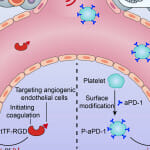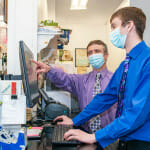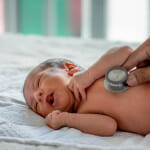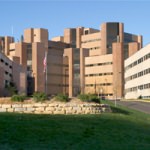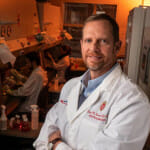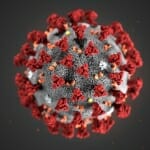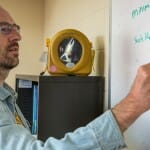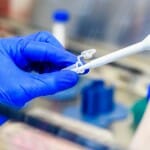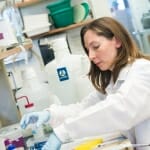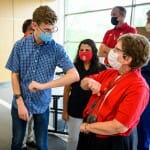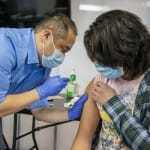Tag Health & medicine
Health care on the home front: UW grads remain in the state to keep Wisconsin well
Doctors, nurses and pharmacists educated and trained in the UW’s health sciences programs are working in every one of the state’s 72 counties.
Newborn Screening Program on UW–Madison campus helps millions
These newborns have had their dried blood spot samples tested at the Wisconsin State Laboratory of Hygiene on campus for a variety of rare, serious disorders that, left untreated, can lead to severe health issues and sometimes death.
UW Carbone Cancer Center conducting breast cancer vaccine clinical trial
The trial is testing a novel vaccine, developed by Dr. Nora Disis at the University of Washington in Seattle, designed to prevent the recurrence of triple-negative breast cancer.
Lab-grown retinal eye cells make successful connections, open door for clinical trials to treat blindness
The most common retinal cell types forming synapses were photoreceptors – rods and cones – which are lost in diseases like retinitis pigmentosa and age-related macular degeneration, as well as in certain eye injuries.
Non-invasive liquid biopsy tracks cancer treatment success in real time
These blood tests could help physicians better treat their patients by allowing them to see which treatments are working in real time without the need for repeated, invasive biopsies of solid tumors.
Drone-delivered defibrillators could save lives
The new research details the framework for designing a network of AED-outfitted, autonomous flying drones, which could allow the life-saving devices to more quickly reach people experiencing cardiac arrest.
Flexibility may be the key to potent peptides for treating diabetes
New research suggests that the peptides — short chunks of protein — used to treat Type 2 diabetes may be more effective if they’re able to flexibly move back and forth between different shapes.
With high-risk, high-reward investment, UW–Madison researcher seeks to outwit cancer’s resistance to treatment
Sequencing the tumor samples’ genetic material will allow the researchers to map changes in individual tumors that became resistant and discern possible common mechanisms of resistance across multiple tumors.
Breast cancer researchers learn how to teach an old drug new tricks to help patients
UW researchers have uncovered a key feature of breast cancers that renders them either vulnerable or resistant to paclitaxel treatment, which could help identify which patients are most likely to see success.
Chancellor gives a big ‘thank-you’ to those behind COVID-19 testing
When the COVID-19 pandemic threw the world into turmoil in the spring of 2020, the experts at the Wisconsin Veterinary Diagnostic Laboratory and the Wisconsin State Laboratory of Hygiene instead got to work.
UW-Madison reports high levels of vaccination
As of Sept. 1, 88 percent of students are fully vaccinated and 91 percent of students have received at least one dose. In addition, 92 percent of employees are fully vaccinated.
UW School of Pharmacy focused on equitable COVID-19 vaccine access
In partnership with the Boys and Girls Club of Dane County, students and employees of the School of Pharmacy are helping sponsor vaccine clinics and town hall discussions to address vaccine hesitancy and concerns.
UW-Madison professors teach schools how to do antigen testing
"A school can identify quickly if a staff member or a kid who comes in the school who might have symptoms comes in the school and should get sent home."
Clinical trial repurposes cancer drug for treatment of vascular malformations
The multi-site trial at UW–Madison is in its first phase and is testing a personalized topical medication in the form of a gel as a way to treat vascular anomalies.
No evidence of COVID-19 spread to local community after UW–Madison residence hall outbreak
A study led by the Centers for Disease Control and Prevention found that the UW–Madison’s prevention efforts, including a two-week quarantine of two residence halls, likely helped contain the outbreak.
Badger Talks: Is the pandemic affecting our memory?
In this Badger Talks, Haley Vlach walks us through the reasons why the pandemic has been so challenging for our memory.

